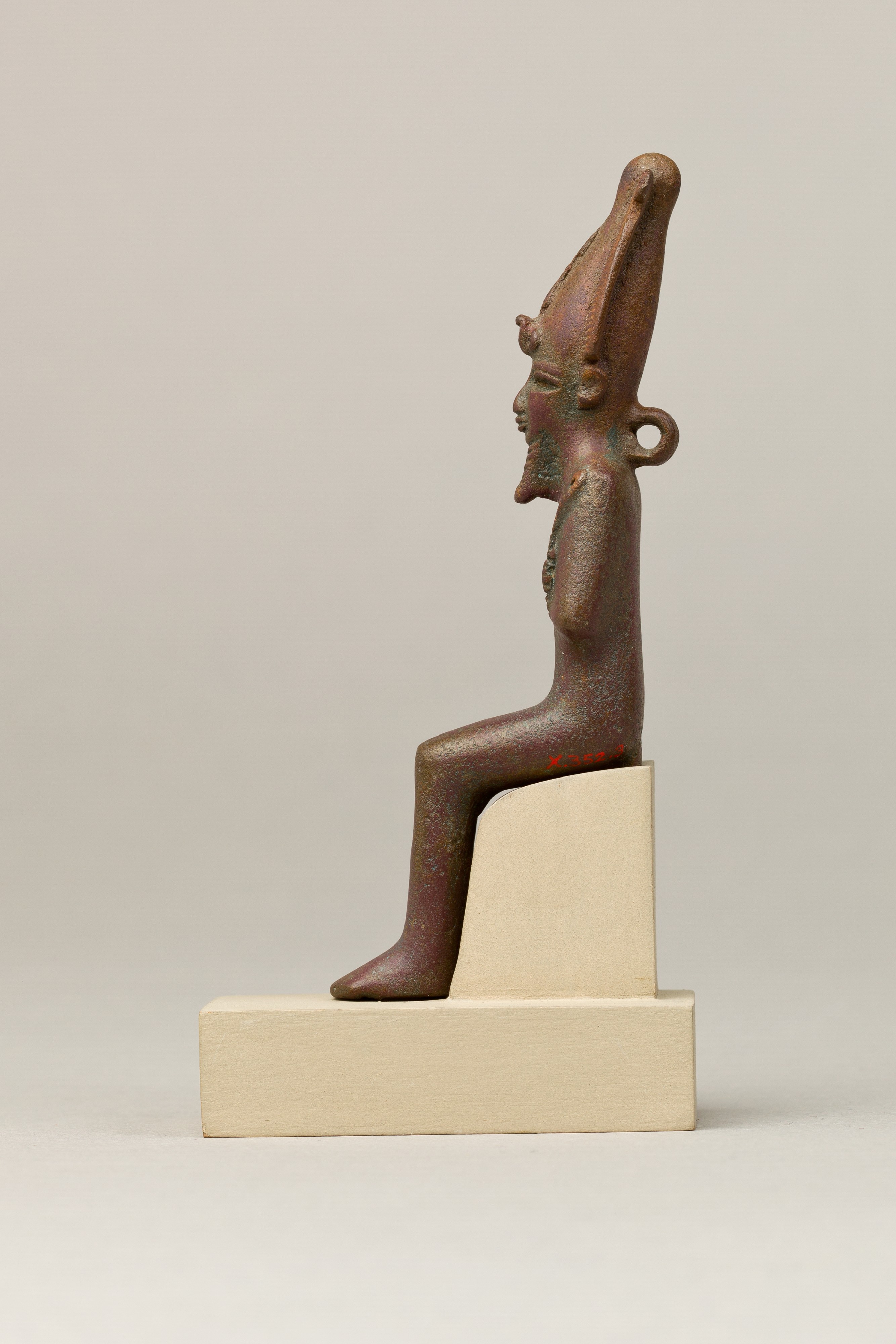Osiris
Late Period–Ptolemaic Period
Not on view
Osiris, foremost of the Egyptian funerary gods and ruler of the underworld, is shown sitting and wearing a close-fitting enveloping garment. The garment hugs the contours of his arms and shoulders. His eyes are deep cut for the addition of gilding or inlay, and a suspension loop is positioned at the back of the neck. He holds the royal crook and flail with his arms crossed on his chest. Copper alloy statuettes of Osiris generally exhibit one of three arm positions: asymmetrical with the right fist over the left, symmetrical with the fists touching, and arms crossed. The latter position, seen here, is the least common of the three but still frequently utilized. Why these arm positions are so consistently represented and how they relate to workshop practices, chronological changes, or conceptions of cult is unknown.
Osiris statuettes such as this one were some of the most abundant temple offerings in Egypt by the first millennium B.C., reflecting both the god’s importance and changing cult practices that spurred the wide-scale dedication of deity statuettes. Many statues of Osiris were offered in temples and shrines belonging to him, but they have also been found in other contexts, for example near temples and shrines honoring other prominent deities or in animal necropoleis
Due to rights restrictions, this image cannot be enlarged, viewed at full screen, or downloaded.
This artwork is meant to be viewed from right to left. Scroll left to view more.





